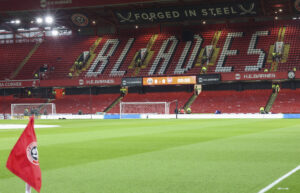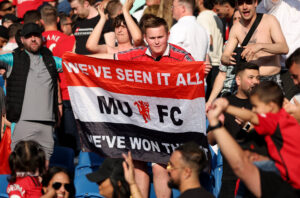On Monday, 32-year-old Abou Diaby announced his decision to retire from professional football. At one point he was considered the natural successor to Patrick Vieira in the Arsenal midfield. However, a laundry list of injuries over the course of his career meant that Diaby never quite achieved his full potential.
Abou Diaby: What Could Have Been
Humble Beginnings
Diaby was not always viewed as a promising prospect. One of his former youth coaches, Marcelo Lienel, recalled just before the 2010 World Cup, “I did not think he would have a future like that. He is someone who was rather discreet and frail enough. When you see the size he has now, it’s surprising.”
For a man now standing six-feet-four-inches, such a quote is likely surprising to hear. However, once he grew into his body, Abou Diaby impressed greatly while playing youth football for the likes of Red Star Paris as well as Paris Saint-Germain.
The midfielder eventually moved to Auxerre after PSG failed to deliver a note of commitment to the young man. It was there that he broke into the first team.
However, in what would become a sign of what was to come, it was also at Auxerre that Abou Diaby began his career-long battle to stay fit. In fact, then-manager Jacques Santini told the media just after selling the player,
“Abou was one of the players I used at the start of the season and then he had to stop because of repetitive injuries. Maybe he was attracted by England and the money there. This probably did not force him to make all the necessary efforts to come back to his best level with us.”
By January 2006, Arsene Wenger was impressed enough by Diaby that he agreed to pay £2 million for his services.
Next Vieira?
It didn’t take long for Arsenal fans to notice what a talent they had on their hands. Abou Diaby played 16 matches across all competitions for the Gunners that season, also netting his first goal for the club.
Diaby could play anywhere in midfield: as a six, eight or a ten. His large frame gave him the strength to tackle opponents or hold them off the ball. The player’s technical skill allowed him to keep the ball under pressure or to distribute the ball with precision. His reading of the game made it difficult to play around or through him and allowed him to pop up exactly where his team needed him.
In short, Diaby had every weapon a manager could want in a midfielder. That is, except durability.
In that first season, the player received his first injury at the club. In May, a tackle by Sunderland’s Dan Smith relegated Diaby to the treatment table for eight months. While he eventually made a full recovery, this pattern of injury would plague the player for his entire career, not just in north London.
However, when he did play few who watched could forget the player. In fact, Wenger compared him to club legend Patrick Vieira quite often,
“His ability to win the ball back is just like Vieira. He is capable of very quick transitions from defence to attack and has fantastic strength box to box, nobody can go with him. Diaby is a bit more offensive than Vieira but when he plays a more defensive role he is very similar.”
And who could really blame the man?
Chronic Injuries
Diaby’s best season came in 2009/10 when he made a career-high number of appearances (40), scored a career-high number of goals (seven) and created a career-high number of assists (six).
After that, Diaby only played 42 more times for Arsenal across five seasons.
His injury list on Transfermarkt makes for sombre reading. The player missed significant time due to problems such as ankle fractures, ankle surgeries, cruciate ligament injuries, muscle strains and pulls. He had six separate injuries which each kept him on the sidelines for 100 or more days over the course of his career.
Another way of illustrating just how frustrating his injuries must have been for the player is to remember that during his 13-season career Diaby made just 208 first-team club appearances to go with his 16 caps for France.
By 2015, even Arsene Wenger accepted the fact that Diaby would not achieve his full potential. Arsenal released him that summer and he went back to his home country and signed with Marseille.
Two years later he played his final competitive match, and two more years after that he announced his retirement.
Last Word
A player of undeniable quality, Abou Diaby is perhaps the perfect representation of Arsenal’s years just after the stadium move. When he did play he would take your breath away. However, due to injuries he almost never played, especially in the later years.
Just how good could Diaby’s career have been? No one will ever know, but we do know that he was the best that never was.
Main Photo
Embed from Getty Images






